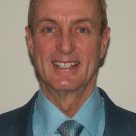DARTMOUTH – The Bedford Institute of Oceanography (BIO) got a major shot in the arm with Monday’s announcement of federal funding for facility improvements.

BIO, a fixture in the Bedford Basin for more than 50 years, is Canada’s largest centre for ocean research.
Gail Shea, the federal Minister of Fisheries and Oceans, was in Dartmouth on Monday morning to make the announcement.
“I’m pleased to announce the Bedford Institute of Oceanography will receive over $3 million from my department and $500,000from Natural Resources Canada for additional repairs, upgrades and other maintenance work related to buildings and facilities here,” she said.
BIO is home to several departments, including Fisheries and Oceans Canada and Natural Resources Canada. They both support the government’s mandate to protect and conserve Canada’s oceans and resources.
Some funding will be used to upgrade the fish lab where important stock assessment research is conducted.
“Certainly the fish lab area where much of the funding for D.F.O. is going, is one of our older buildings,” said Sherry Niven, the acting director of science at D.F.O. “We need windows replaced. They’re leaking, so they’re being upgraded to energy efficient windows and it will make it far more comfortable for our scientists to work.”
There have also been problems with leaking roofs, which will now be repaired.
“We do have some leaking issues, especially in some of our older buildings,” said Niven.
Another $400,000 dollars will go to upgrades in the Geological Survey of Canada department, which has sediment samples from the Arctic, Pacific and Atlantic oceans. Samples are stored for 30 to 40 years at the facility.
“The biggest need was an expansion on our core storage facility and our sediment lab,” said Stephen Locke, director at the Geological Survey of Canada. “We often do the geological part of oceanography here, so we take sediment samples, core samples. We have a large refrigeration unit that is being expanded as a result.”
- Life in the forest: How Stanley Park’s longest resident survived a changing landscape
- ‘They knew’: Victims of sexual abuse by Ontario youth leader sue Anglican Church
- Carbon rebate labelling in bank deposits fuelling confusion, minister says
- Buzz kill? Gen Z less interested in coffee than older Canadians, survey shows



Comments